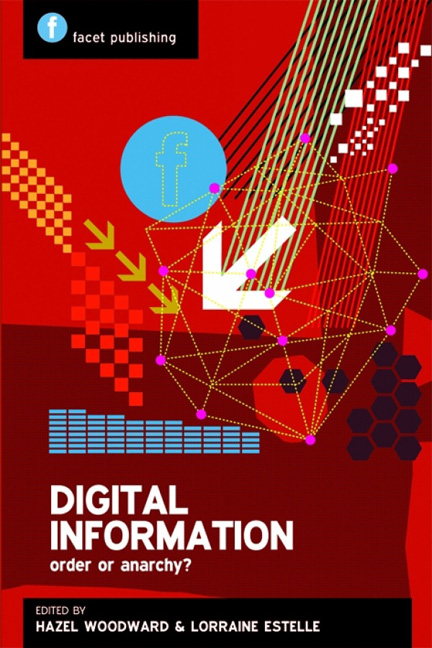Book contents
- Frontmatter
- Contents
- Acknowledgements
- Contributors
- Preface
- 1 Introduction: digital information, an overview of the landscape
- 2 Scholarly communications: the view from the library
- 3 Scholarly communications: the publisher's view
- 4 E-books and scholarly communication futures
- 5 Digitizing the past: next steps for public sector digitization
- 6 Resource discovery
- 7 Who owns the content in the digital environment?
- Index
4 - E-books and scholarly communication futures
Published online by Cambridge University Press: 08 June 2018
- Frontmatter
- Contents
- Acknowledgements
- Contributors
- Preface
- 1 Introduction: digital information, an overview of the landscape
- 2 Scholarly communications: the view from the library
- 3 Scholarly communications: the publisher's view
- 4 E-books and scholarly communication futures
- 5 Digitizing the past: next steps for public sector digitization
- 6 Resource discovery
- 7 Who owns the content in the digital environment?
- Index
Summary
Given the absolute faculty of reading, the task of going through the pages of a book must be, of all tasks, the most certainly within the grasp of the man or woman who attempts it! Alas, no; – if the habit be not there, of all tasks it is the most difficult. If a man have not acquired the habit of reading till he be old, he shall sooner in his old age learn to make shoes than learn the adequate use of a book. And worse again; – under such circumstances the making of shoes shall be more pleasant to him than the reading of a book. Let those who are not old, – who are still young, ponder this well.
(Trollope, 1866)Introduction: the impact of the digital revolution
It is a truth universally acknowledged that in the 21st century we are witnessing a revolution in communication unparalleled since the invention of the printing press in the 15th century. As in the 15th century, however, there is a time lag between technical innovation and the impact on society of changes in the distribution and publishing of scholarly knowledge. Initially, the first printed pages of incunabula replicated the physical layout of manuscripts, and in the same way digital journals and books have remained influenced by historical print and research assessment frameworks.
In the monastic scriptorium, the dissemination of knowledge was limited by the productivity of the output of the scribes and by public accessibility to appropriate libraries or personal collections. Books generally impacted little on the general public, for whom oral transmission (perhaps now called social networking) was the norm for conveying knowledge and gossip. With the introduction of movable type, these access limitations were overcome quantitatively, although it was probably not until the second half of the 19th century that the mass of the reading public and the print world significantly coincided. By the 19th century, books were no longer individually crafted works of art, but products of industry in a variety of formats (Battles, 2009).
E-books, by which one means the text rather than the device, are another significant variant in the evolution of book publishing and distribution. As Siracusa (2009) contends, an issue ‘is right there in the name: e-book.
- Type
- Chapter
- Information
- Digital InformationOrder or anarchy?, pp. 89 - 116Publisher: FacetPrint publication year: 2009



